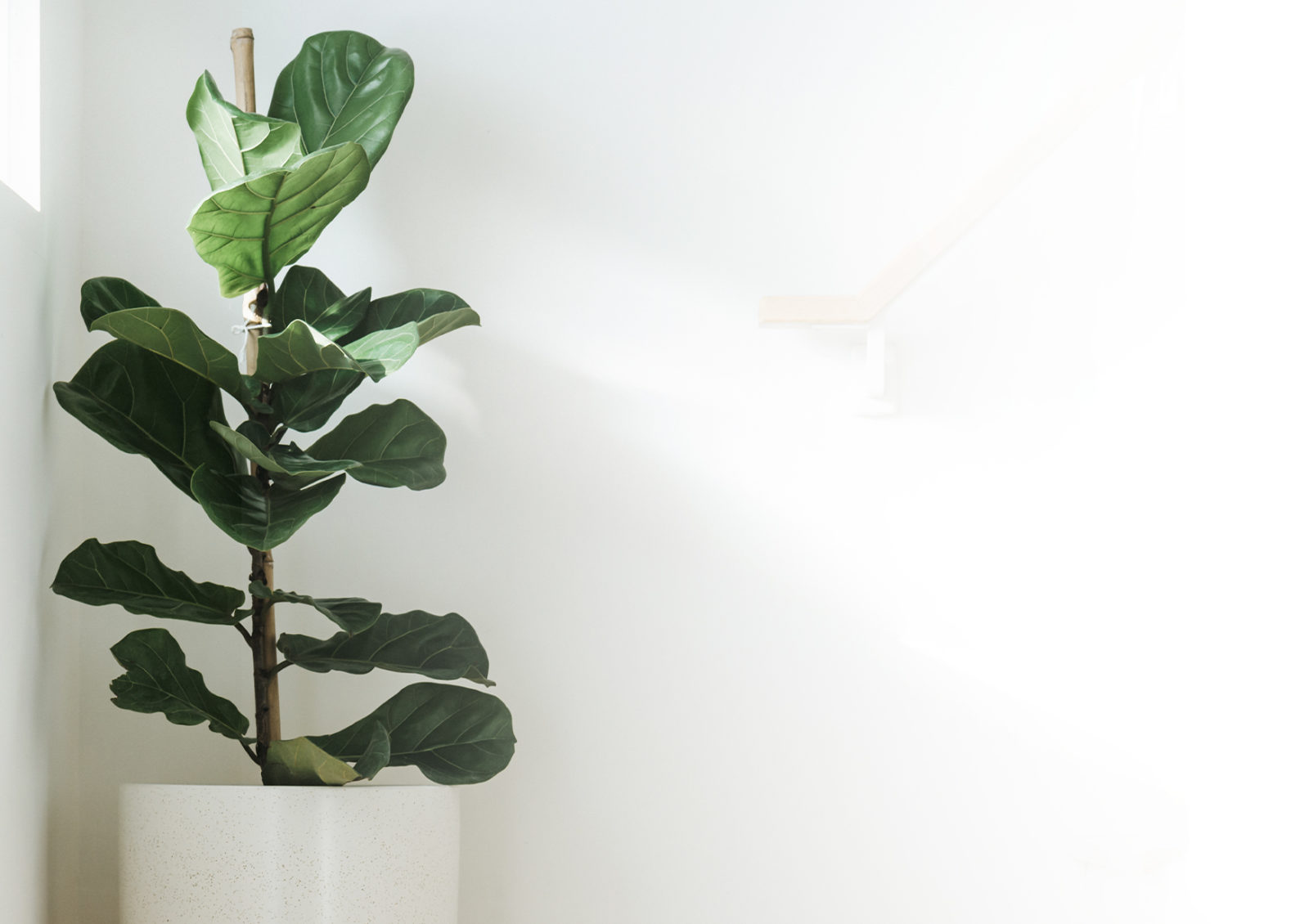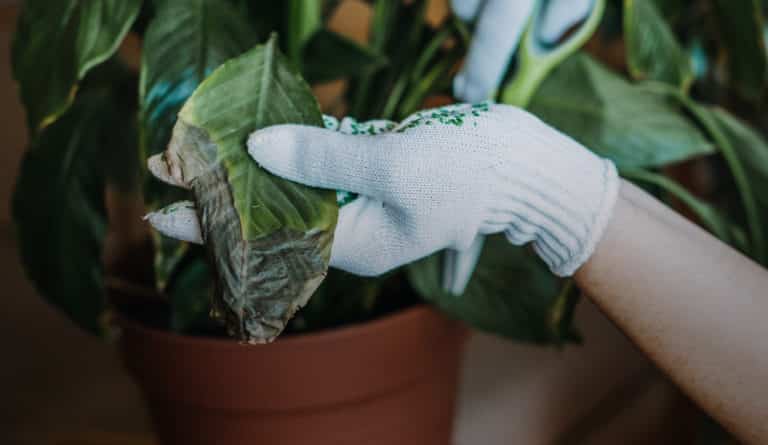
fiddle leaf fig
aka ficus lyrata, fiddly fig
Named for their broad, gorgeous violin-shaped leaves. Much like a violin, it requires frequent fine-tuning, but their beauty is worth the extra effort. Description: violin-shaped leaves/ popular / some look bushy some tall and tree like / west Africa / lowland tropic
variations
If you’re new to this plant, the Bambino or Dwarf Fiddle varieties are a good starting point. Common cousins are Ficus Audrey and the Rubber Tree.
light
bright light, please!
Those big leaves crave plenty of bright, indirect light. Tolerates lower light but won’t grow as quickly. Avoid direct summer sun, which can burn the leaves.
water + feeding
dry out between watering
Allow the top two inches to get fully dry, then give it a good watering (without overwatering where water is pooling). Monthly feeding is suggested during spring and summer.
toxic
toxic to humans and pets
Ingestion can cause mouth, stomach irritation and vomiting. Can be severely toxic if a lot is ingested.
location
pick a good spot and stay put
Loves bright indirect light in a warm room. Hates vents shooting it with hot or cold air. Likes to be rotated in place (for even light exposure) but does not like to be moved around.
humidity
loves it
This jungle plant likes it humid. Misting and humidifiers are welcome.
size
a big fella
Given good care, it can grow over 8 to 10 feet tall.
pro tip
clean the leaves
Keep the dust off those big, green beauties. Their broad surfaces attract dust, and therefore dust mites.
fun fact
can grow flowers and even fruit
If you’re lucky to have enough consistently warm weather, this plant will flower and yes, maybe even give you figs.


beyond the basics
-
soil & potting
Use a rich, well-draining, indoor potting soil, like Miracle-Gro® Indoor Potting Mix. Ensure your pot has good drainage. If you notice water pooling in the drainage tray, empty it.
-
when to repot
Every 2-3 years in the Spring, especially in the earlier years. Increase the pot size by 2 inches each repotting. When your Fig is all grown up, you can get away with just replacing the top few inches of soil.
-
propagation
Find a stem with 3-4 leaves and cut just below the lowest leaf. Now remove the lower leaves to make room for root growth. Place your stem in a jar of water. Figs can be stubborn to root, so add some rooting hormone to the water.
-
pest control
Fiddle Figs are prone to mealybugs, scale insects, and spider mites. Make a routine of dusting and checking under the leaves. Our pest control section in Plant 101 will help you identify and deal with pesky plant pests!

troubleshooting
-
sudden leaf loss?
Your friend is stressed out. Figs don’t like sudden changes to their surroundings. Often it’s blasts of hot or cold air a nearby vent. Moving from the nursery to your home is a shock for this gentle giant. If there haven’t been any sudden changes, it could be overly dry air. It could also be too much or too little water. Or too much or too little food. This plant is not the easiest! Review your placement and care routine, and keep doing your best. The leaves should grow back.
-
dark patches or spots on leaves?
Possibly a sunburn, or maybe leaf spot. If your Fiddle Fig gets direct sunlight it’s probably sunburn. Lots of indirect light is good but direct sun is bad. If that’s not it, it could be a fungal disease called leaf spot. Overwatering or an overly damp environment are the cause. Stop the spread to other plats, make sure leaves aren’t near each other. Remove infected leaves, including any that have fallen into the pot. If you’re misting, stop. Treat with fungicide as directed.
-
leaf tips turning brown?
Low humidity, not enough water or irregular watering. Give more attention to watering. Routines matter for this plant. Ensure it’s regular and thorough and that the entire root ball is getting wet. Check the room temp. If it’s over 75 F/24 C and the air feels dry, mist the leaves regularly and consider a humidifier. Or put the pot on a pebble filled tray of water. Make sure the pot doesn’t touch the water.
Make sure you are watering the plant thoroughly and at regular intervals, getting the whole root ball wet.
-
yellowing and wilting leaves?
Probably root rot from overwatering. Do you also notice mushy stems and/or slower growth? These are all signs of root rot. Not to worry, when caught early this is easily fixable. Reduce watering and ensure the soil dries out before watering. Check your pot’s drainage. Does it have a hole that allows excess water to escape? Help things dry by poking holes in the soil. This will get oxygen to the roots. You can also put the pot (with drainage holes) in a tray that’s lined with a layer of dry soil. It acts like a sponge to draw out extra moisture. Now, let’s check for root rot. Dig down and cut out any that look affected. If things are really bad, consider repotting entirely with new soil. For more information check out our Plant 101 section.



